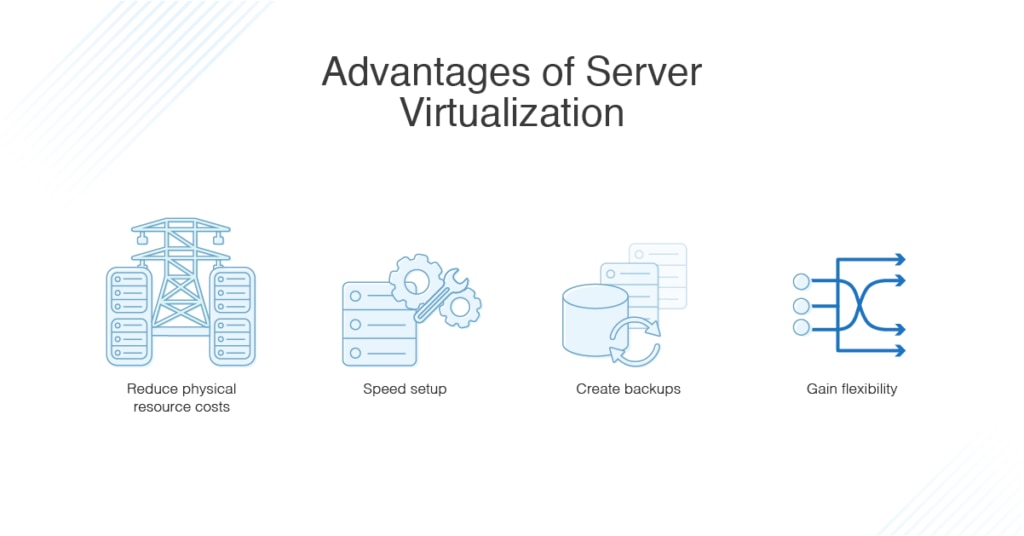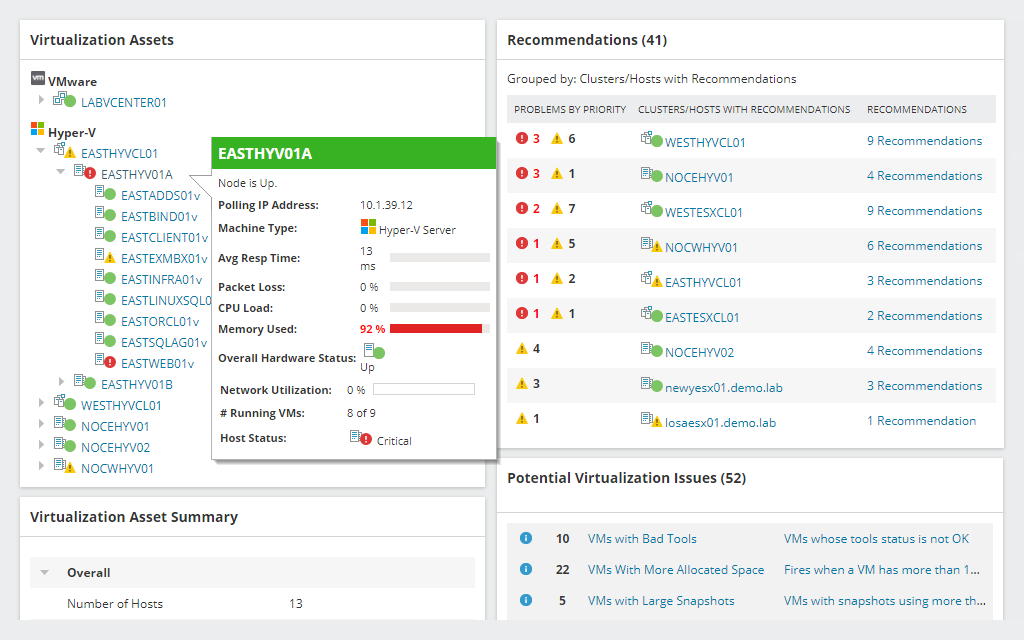Virtualization technology has been revolutionary in the world of server computing, and in a several other aspects of computing, including storage, applications, desktop virtualization, and cloud computing. The use of virtualization and cloud computing has given rise to several new, flexible services, such as infrastructure as a service (IaaS), software as a service (SaaS), and platform as a service (Paas). There are several benefits for virtualization in general, but businesses may discover some notable benefits for server virtualization in particular.
What Are the Benefits of Virtualization?
The benefits of server virtualization cannot be understated, as virtual servers have fundamentally changed the way many enterprises set up their networks and computing environments. Server virtualization has been around since the last decade, but this technology is being rapidly adopted by businesses and has expanded into many different virtualization technologies allowing companies to provide several service offerings, including SaaS, IaaS, and PaaS. Cloud computing is based significantly on virtualization technologies.

One of the advantages of server virtualization is hardware costs can be massively reduced. Businesses can virtualize many servers and host them on one physical machine. In many cases, servers in strictly physical environments are only using a small portion of their capacity at any given time. With virtualization, resource allocation and use can be much more dynamic, which can save on costs by reducing the need to purchase more physical hardware. As a side effect, you can also save on energy costs. Running fewer physical machines puts a lower toll on your energy systems, which can reduce the costs you pay each month for electricity. You can also reduce the costs of hiring a building or space to store your servers.
Second, server virtualization can lead to much faster server provisioning and deployment. Virtual machines can be set up much more quickly and existing machines (and their settings) can be easily cloned. This means if you need a new server, with virtual machines you can set one up much quicker than if you needed to order and assemble new hardware.
With virtual servers, data can easily be replicated and backed up to other machines. This can prove critical in a disaster recovery scenario, in which data and backups need to be quickly restored and discovered.
Finally, when faster provisioning, deployment, replication, and backup are involved, overheads for administrators are reduced. This can save time for your admin team and allow them to focus their energy elsewhere, leading to greater productivity.
There are also many other kinds of virtualization providing many advantages and once you have virtualized your servers you consider implementing virtualization for other parts of your environment. Besides server virtualization, the other kinds of virtualization you should learn about include:
- Storage virtualization: Some of the main benefits of storage virtualization, other than the general benefits above, include easy data migration, due to the common use of software mirroring, and the ability to use different kinds of storage array easily with your SAN. It also provides much easier and faster access for employees, as storage access can be easily assigned to new terminals or access points when staff need to change their work locations or if a device goes down.
- Desktop virtualization: Desktop virtualization is when an entire desktop system is created virtually, allowing you to run a separate operating system or a collection of different applications. One of the main benefits is you can test out how your programs run on different operating systems, or work with files through the internet without worrying about your host system being infected by something potentially malicious.
- Application virtualization: When it comes to applications, the benefits of application virtualization are many. Virtualized applications are easily portable and accessible, and can be maintained easily as well. Virtualized applications separate a program’s executables, configuration files, and dependencies from the operating system, which means they can be accessed through multiple different devices and platforms. If you don’t need to virtualize an entire desktop for a particular purpose, narrowing things down to the specific applications can be a good alternative.
- Network Virtualization: Finally, network virtualization is also a common use for virtualization technology, where network resources are essentially pooled and then allocated in ways through a virtual system allowing them to be used more efficiently and flexibly. The main benefits of network virtualization include better bandwidth management, increased security, and centralized management.
Some of the benefits of virtualization in cloud computing include many of the concepts explained above, as you can centrally manage cloud systems and data storage migration while protecting systems from failures.
Monitoring Virtual Systems
It’s clear to see the benefits of server virtualization technology, and virtualization in general, are numerous. However, to make the most of these benefits you need to make sure you’re using monitoring and management software to optimize your virtual environments. There are several virtualization management software products on the market, but SolarWinds® Virtualization Manager (VMAN) is my top pick for a tool capable of helping you manage your virtual servers and other virtual machines.

VMAN provides complete visibility across your virtualization environments and works well with both VMware and Hyper-V hypervisors. You can also change and configure your virtual machines through VMAN without having to access them through your hypervisor at all. You can perform these actions manually, or you can set up custom automated scripts to take action when particular conditions are met.
You can also use VMAN to gain insight into the performance of your virtual machines and see whether your virtual servers are acting as they should be. VMAN’s actionable intelligence also creates recommendations for how you can optimize VM performance and you can schedule these recommended actions to occur.
Overall, virtualizing your servers and other parts of your computing environment is a positive and useful step all businesses should be looking into. It can reduce costs in many different ways, free up time for your IT team, and allow greater productivity and more-effective disaster recovery processes. When there are so many benefits to virtualization, why hold back? Just make sure you use a high-quality virtualization tool such as SolarWinds VMAN, so you can maintain your virtual environment in an efficient way.
